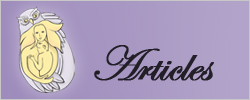 “Gentle births are associated with love and peace…..” Robin Ibu Lim
“Gentle births are associated with love and peace…..” Robin Ibu Lim
This is an important statement made by a much-loved midwife and is based on research conducted by John Bowlby, Marshal Klaus, Lloyd De Mause, Dr Arthur Janov, Allan N. Schore, Dr Michel Odent and Dr David Chamberlain, among others. The research investigates the attachment and neurobiological effects of experiences before, during and after birth and explores how these first experiences prime the baby’s brain and body responses for a lifetime. Evidence suggests that traumatic events and prolonged stress and/or separation during pregnancy, birth and the postpartum period may permanently affect a baby’s developing brain structures and patterns of behaviour.
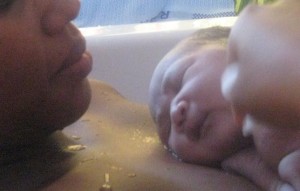 Conversely, a baby whose mother is happy, well prepared for her labour, allows her labour to progress with confidence and courage and gives birth spontaneously, without drugs or pain relief, ensures that her baby is biologically primed for adaptation and social responsiveness after birth. This is as a result of the release of a cocktail of what Dr Michel Odent calls the “Love Hormones”, namely oxytocin, prolactin, relaxin, endorphins, and a smattering of adrenalin for alertness. Love hormones are released during labour in ever-increasing spurts, so that immediately after birth, ‘love hormone’ concentrations in the blood stream are at their peak and a woman is primed for attachment, as is her baby. This period straight after birth is recognised as a biologically “sensitive period” when mother and baby are alert and awake so that they recognise and bond with each other. These early interactions lay the foundation for social communication patterns and early personality development. In fact Dr Michel Odent goes so far as to ask the question about elective caesarian operations, when a woman does not have these ‘love hormones’ in high concentrations in her body: how does the elective caesarian section prime a mother and baby for attachment? In animal research ( rats, sheep), when labour is interfered with, mothers reject their young; for example, when a ewe is given an epidural or chloroform, this ewe will ignore her offspring after birth.
Conversely, a baby whose mother is happy, well prepared for her labour, allows her labour to progress with confidence and courage and gives birth spontaneously, without drugs or pain relief, ensures that her baby is biologically primed for adaptation and social responsiveness after birth. This is as a result of the release of a cocktail of what Dr Michel Odent calls the “Love Hormones”, namely oxytocin, prolactin, relaxin, endorphins, and a smattering of adrenalin for alertness. Love hormones are released during labour in ever-increasing spurts, so that immediately after birth, ‘love hormone’ concentrations in the blood stream are at their peak and a woman is primed for attachment, as is her baby. This period straight after birth is recognised as a biologically “sensitive period” when mother and baby are alert and awake so that they recognise and bond with each other. These early interactions lay the foundation for social communication patterns and early personality development. In fact Dr Michel Odent goes so far as to ask the question about elective caesarian operations, when a woman does not have these ‘love hormones’ in high concentrations in her body: how does the elective caesarian section prime a mother and baby for attachment? In animal research ( rats, sheep), when labour is interfered with, mothers reject their young; for example, when a ewe is given an epidural or chloroform, this ewe will ignore her offspring after birth. 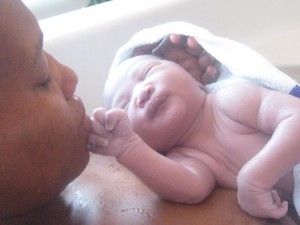 It is essential for the survival of the young of any species that a mother is attached and motivated to care for her progeny. This necessity is an imperative in human beings, because our offspring are helpless and dependent on our care for survival for approximately 13-18 years. Human babies do not walk or swim like other mammals straight after birth; it will be at least a year before a human baby will toddle teeteringly on his two legs!
It is essential for the survival of the young of any species that a mother is attached and motivated to care for her progeny. This necessity is an imperative in human beings, because our offspring are helpless and dependent on our care for survival for approximately 13-18 years. Human babies do not walk or swim like other mammals straight after birth; it will be at least a year before a human baby will toddle teeteringly on his two legs!
During most caesarian sections, a newborn baby is separated at birth from his mother, sometimes for hours, even days. The incidence of breastfeeding difficulties between mother and baby rises sharply when a woman has an epidural or elective caesarian section. It is also cumbersome for the mother to handle her baby confidently, because she is in pain from the uterine and abdominal scar.
Early attachment deficits and impaired bonding may lead to misattuned communication between mother and baby, as a result of what Bowlby terms ‘dissociation’ after separation and loss. The psychobiological structures of the baby’s brain are highly susceptible to imprints and experiences from conception to 2yrs old, and no less at the time of birth. Brain changes occur and synapses are connected during a traumatic birth and /or separation. A dissociated and unresponsive baby will also be unable to elicit responses from the mother by being aware and opening his eyes, touching the mother with his hands and responding to her voice. This in turn may result in lack of responsiveness from the mother, leading to problems in communication within the mother-infant dyad and possible developmental delays in the growing baby. A baby is exposed to the mother’s neuro-hormonal and neuro-chemical status in the womb via her bloodstream through the placenta. When a human being is stressed for long periods of time, the body produces a steroid hormone called cortisol. High levels of cortisol in the body eventually damage organs and healthy body functions.We also know that high levels of cortisol for long periods of time damage the cells in the hippocampal region of the brain, shown to be part of the emotional centre of the brain. In animal research, the death of cells in the hippocampal region of the brain leads to aggressive behaviour and less socially co-operative behaviour.
Trauma experienced by a pregnant woman will affect the unborn child in the womb. Women who are unsupported socially experience high stress levels and this is turn affects the fetus. A teenage pregnancy, alcohol abuse, violence int the family or community, malnutrition and /or famine are a few of the scenarios that can have negative consequneces on the unborn baby.
Caesarian section, while absolutely necessary as a life-saving intervention in medical emergencies, is a violent operation for both mother and baby. Major abdominal surgery is a shock to the mother’s body and is monitored carefully by an anaesthetist for the duration of the operation, and post operatively for several hours. The baby is pushed out of the womb, within a few minutes, into a brightly lit, noisy environment and roughly wiped by strangers before being whisked off for an examination and injections by the pediatrician and nurses. This means loss and separation for the baby and an overwhelming sensory experience that, if prolonged, could have adverse influences on limbic system brain reponses. How do we prevent fetal and neonatal trauma, separation and loss experiences around the birth process? It is possible to facilitate kangaroo mother care in theatre and minimize separation of the family members. The skin to skin contact elicits the release of oxytocin for both mother and infant and assists the bonding process, mitigating the effects of surgical birth.
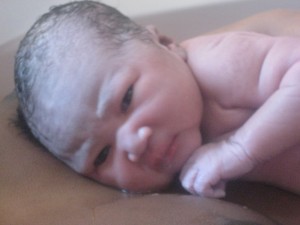 Trauma, loss and separation must be avoided as far as possible during pregnancy, birth and the postpartum period. When trauma and loss occur the effects can be mitigated through ensuring reflective and caring social support and encouraging skin-to- skin contact between mother and baby as soon as possible after birth. Pregnant women need to be surrounded by loving people, need to be supported and helped when they experience stressful circumstances, and need to be allowed and encouraged to give birth without disturbances and unnecessary interventions. Labour is a normal, physiological and biological process and works well for 85% of women. The baby should not be separated from the mother for at least the first hour after birth, even more so when a caesarian section is medically necessary,- babies can be handed to the mother in theatre and kept warm next to her body. Effort should be made to refrain from administering drugs and epidurals, as these negatively affect the baby and subsequent breastfeeding and attachment processes. Instead, giving women tools and information that will empower them such as Antenatal workshops, Birth Preparation Classes, Assistance of Doulas during labour, Midwife Assistance at Birth, Homebirth, Gentle Birth, Water Birth are all vehicles that teach the parents how to protect the integrity of the baby-mother dyad. Every effort should be made to treat women giving birth with reverence and respect, providing guidance and encouragement and the right environment for birth.
Trauma, loss and separation must be avoided as far as possible during pregnancy, birth and the postpartum period. When trauma and loss occur the effects can be mitigated through ensuring reflective and caring social support and encouraging skin-to- skin contact between mother and baby as soon as possible after birth. Pregnant women need to be surrounded by loving people, need to be supported and helped when they experience stressful circumstances, and need to be allowed and encouraged to give birth without disturbances and unnecessary interventions. Labour is a normal, physiological and biological process and works well for 85% of women. The baby should not be separated from the mother for at least the first hour after birth, even more so when a caesarian section is medically necessary,- babies can be handed to the mother in theatre and kept warm next to her body. Effort should be made to refrain from administering drugs and epidurals, as these negatively affect the baby and subsequent breastfeeding and attachment processes. Instead, giving women tools and information that will empower them such as Antenatal workshops, Birth Preparation Classes, Assistance of Doulas during labour, Midwife Assistance at Birth, Homebirth, Gentle Birth, Water Birth are all vehicles that teach the parents how to protect the integrity of the baby-mother dyad. Every effort should be made to treat women giving birth with reverence and respect, providing guidance and encouragement and the right environment for birth.
Having said all this, it is important to remember that attachment and bonding are flexible. When a woman is well supported and loved, she is able to bond with her baby deeply in the pregnancy and the attachment between them will be minimally affected if there is a traumatic intervention such as an emergency caesarian section or separation of the baby. Many mothers vigilate next to the incubator when their babies are ill and in need of medical care, and sustain the attachment in small ways that assist with later recovery of closeness.
To conclude, a society that respects women and their role in childbearing respects the baby. A society that reveres natural birth and encourages women to approach birth with confidence and love accentuates and underscores her capabilities as a mother and gives her the best possible start to mothering and communication with the baby. This confidence in turn helps protect the baby’s developing brain from assault and neurological deficits.
References
Bowlby, J. (1969). Attachment and Loss. Vol 1. Attachment. New York: Basic Books.
Bowlby, J. (1973). Attachment and Loss. Vol 2, Separation, anxiety and anger. New York: Basic Books.
Bowlby, J. (1981). Attachment and Loss Vol 3: Loss, sadness and depression. New York: Basic Books
Field, Tiffany (Ed). (1995). Touch in Early Development. New Jersey: Lawrence Erlbaum Associates.
Janov, A. (2000). The Biology of Love. New York: Prometheus Books
Klaus, M.H., & Kennell, J. H. (1982). Parent-infant bonding. St Louis: Mosby.
Klaus, M.H., Kennell, J.H., Plum, N., & Zuehlke, S. (1970) Human maternal behaviour at first contact with her young. Pediatrics, 46, 187-192.
Klaus, M.H., Kennell, J.H., Robertson, S., & Sosa, R. (1989). Effects of Social support during parturition on maternal and infant morbidity. British medical Journal, 293, 585-587.
Schore, A. N. (2003). Affect Regulation and the Repair of the Self. New York. W.W. Norton and Company.Inc.
Odent, M. (2001). The Scientification of Love. London: free Association Books.
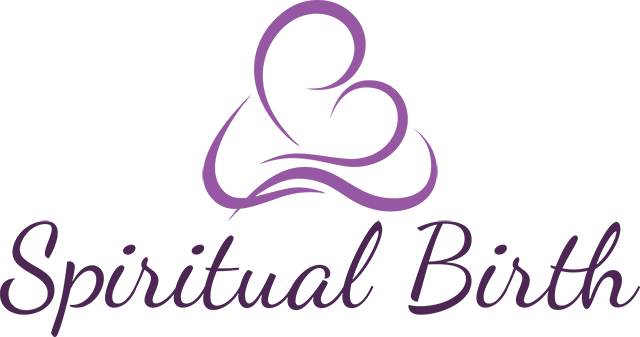
A fundamental book for me on this topic was Bruce Perry’s book “Born for Love.” I was aware of the effects of early childhood experiences which included prenatal and birth, but not to the detail and the extent to which the chemicals are master-coordinated to prime a baby’s brain for attachment at birth. The value of improving the pregnancy, birth, and early life experiences are for the rest of the baby’s life, and I hope we continue to move forward in society recognizing this and accommodating to this attachment view!
As a midwife and mother, I agree with the idea that normal, physiological birth is desirable whenever and wherever possible. I have to say, however, that I have become increasingly skeptical of the notion, overplayed, in my view, by our midwifery community, that what happens at birth and in the immediate postpartum has the most decisive effect on maternal-infant bonding. As a midwife, I believed this wholeheartedly for many years; to be frank, it was, and is, one of the primary mechanisms by which we “market” midwifery and home birth and I mean that with no cynicism. My experience as a mother, however, has led me to reach different conclusions about the nature of bonding. My three oldest children were normal, natural births at home; wonderful births to be sure. My youngest daughter, however, was born by emergency c section because of spina bifida; she had turned transverse followed by PROM and a minor degree of cord prolapse. I saw her only momentarily before she was whisked off to NICU followed by a transfer to a Children’s Hospital for neurosurgery and the usual follow up for Myelo. I didn’t see her for 5 days. I was, of course, terribly worried that she was going to be traumatized by her separation from me along with all the painful tests and surgeries she was undergoing. Yet….every moment I felt in the deepest communication with her. I talked with her spiritually or mentally, and I felt very strongly that she “heard” me and that we were still in complete communion in spite of the separation. I thought I “knew” enough to assume that this was merely wishful and protective thinking on my part but when I finally arrived at the NICU in the hospital where she had been transferred, and my baby daughter was placed in my arms, her eyes flew open, and her hands literally reached out for my face and she started “talking”–moving her mouth and then rooting for the nipple! She knew me, and she was as calm, connected and whole as any of my home born babies had been! She nursed like a champ from that moment and she has been, hands down, my most securely attached child with the least levels of anxiety and difficulty in spite of what would seem to be the most difficult and challenging postpartum period imaginable. After this experience, I began paying far closer attention to what I told mothers about the ‘bonding’ experience, reassuring them that bonding, in my very strong view, occurs during pregnancy and my own research and subsequent experience with clients so counseled has led me to believe that this makes perfect evolutionary sense–if mothers were not deeply and intimately bonded with their babies long before birth, they would very likely not take care of them at birth, especially in a threatening environment when it would be most necessary. In short, I am convinced that we overplay the fragility of the mother-infant bonding period at birth and in the immediate hours, almost denying the even more profound fact of prenatal bonding to the deep detriment of mothers and babies. For years, whenever I had to transport to hospital, I was finding myself dealing with mothers who were convinced that even necessary disruptions for needed care of the baby after the birth had “ruined” their bonding with effects lasting, often, for many months that included postpartum depression and anxiety directly related NOT, as I had thought at the time, to the “disrupted” bonding itself, but to the belief in the idea that a lack of “perfect” postpartum bonding had “ruined” everything and I still see this playing out on forums and “mothering” boards everywhere. Whenever possible, I post something along the lines of what I have written here and subsequently find my “in box” loaded with posts from women who tell me that “I always really believed what you’re saying…I felt really bonded to my baby no matter what happened but all these doulas and midwives are telling me that the “Dr’s ruined my birth and messed up my bonding” and “If you have a home birth next time…that won’t happen” but I honestly feel that I AM bonded to my baby”.
We all need to be very careful about our motivation in putting out “evidence” that supports a supposition that flies in the face of the experiences of many, many mothers who have had less than optimal births but clearly love and are deeply bonded to their babies.
The human species is hardwired for love and attachment and it’s actually quite difficult to destroy that instinct; if it were so easily disrupted, the species would have died out long ago! We need to give our mothers and their babies, far more credit for being able to find one another, even in the worst storms while doing what we can to keep those storms at bay. Respectfully and warmly, Michelle.
You raise important issues here. It is clear you were closely bonded to your daughter prenatally and that you both seemed to understand the necessity of the temporary separation. I have seen this in my practice too. I think culture and education also help women to overcome disruptions in the bonding process. That we as humans function in groups optimizes our chances of survival. I do believe in an evolution of consciousness though. As we become more reflective about ourselves and our behaviours, we are able to be better parents. Abuse, neglect, infanticide are not uncommon in societies all over the world, still. So I am not sure about automatic love and attachment. Learning occurs from conception, through infancy and on into adulthood and lays down our neuro-architecture in the early years especially. When we experience neglect and abuse, we become hard-wired to act out our displaced feelings on the world around us. Hence the wars and the violence, poverty, neglect, greed etc.
I really like the conclusion and agree wholeheartedly.
I do have to say that I believe you are stating your case in a somewhat overstated way. While it is true that difficult experiences can leave lasting neurologically based patterns in us, it is also true that we are incredibly plastic and resilient.
All should be done to revere in this marvelous occasion of birth and to promote bonding for sure, but human bonding is not accomplished in an instance. It is an ongoing rediscovery of each other over time, a meeting of many moments. God for bid should we need to, but recovering from traumatic experiences is possible (especially because it is not all together avoidable).
great article on the whole, and i am with you on this one.
chris white
pediatrician
Dear Chris – At last some crits! Thank you for your comment and thoughts. Of course, you are right, babies and children can recover from traumatic experiences and we are amazingly resilient and plastic. And yes, I agree, this is what life is about, an ongoing rediscovery of each other, you put it so well!
As far as my “Bowlby” article goes, I am choosing a starting point (As a midwife of course I am biased) to educate people and inform parents and professionals about the importance of the early brain plasticity in humans and how all information is stored. I see babies in my practice who are suffering from what might be described as post traumatic stress symptoms, such as sleep difficulties, feeding difficulties, fussiness, colic, frequent and prolonged crying. To me these symptoms are signs that the baby is trying to heal him/herself and struggling to find a connection point. I also daily listen to mothers who have unwittingly been guided towards having an elective caesarian section and suffer pain postnatally, feelings of loss, postnatal depression and unresponsiveness towards their babies, all of which impacts on attachment behaviours. In South Africa, our private health care system has a 70-90% caesarian section rate, a rate that goes against the evidence of what is best for woman and/or the baby. A Caesarian is a wonderful intervention when is is medically indicated, dont get me wrong. And it is not the only intervention or factor that might traumatize and negatively affect a mother-infant dyad. I also agree with you that healing is possible and this is part of the work I do with mothers and babies. I help them to reconnect when there has been a traumatic event and their communication systems need re-establishing. As you say, it is not possible to always prevent traumatic events and experiences, yet is is better to prevent them in the very young and at critical periods of growth and development as far as possible. I really appreciate this discussion and thank you again for posting.
Kind Regards
Marianne
Check this out
The human universe would begin becoming much more mentally, emtionally, and psychically healthier if people ceased giving birth to their babies in hospitals. You’re in Satan’s hands in a hospital.
Hi Everpresence,
Not sure i agree with your comment – I think hospitals have their place and many of my clients have wonderful gentle births in hospital with a midwife.
Hi Everpresence, I ‘m not sure I agree with this comment. Many of my clients have wonderful gentle births in hospital with a midwife in attendance.
Marianne- Do you mind me asking what your history is- I assume it must have involved some kind of birth trauma/ separation? i don’t mean to pry though.
Hi Helen,
Thank you for your comment – not prying, just insightful about human motivation. Yes, you are right, I did experience birth trauma and relationship trauma during my childhood and yes, my experiences have shaped my choices and desire to succeed in the work I do as a midwife and Aware Parenting Consultant. Many of us doing work in healing modalities today are coming from a “Wounded Healer” perspective. We know what it feels like to be hurt and we hope to help others be less hurt! It is a way also of healing ourselves and preferable to acting out in negative ways. Consciousness leads to enlightenment!
This makes so much sense. I think the work you are doing is tremendously important.
Thank you Sally. I suppose my need and the drive to discover myself and why my history is so painful has led me to the answers in the hope of making it better for other men and women to be more conscious and thereby help the babies they bring into the world!!
This is a lovely article that is written so clearly. Please keep them coming Marianne. Thank you.
absolute awesome work I love it so much sense well done